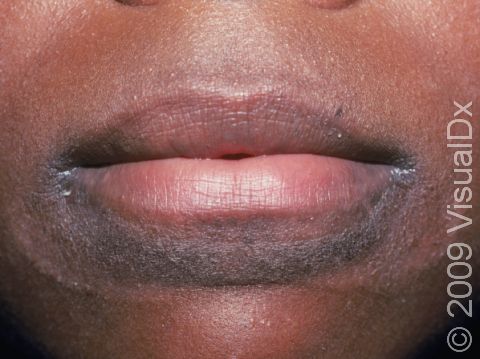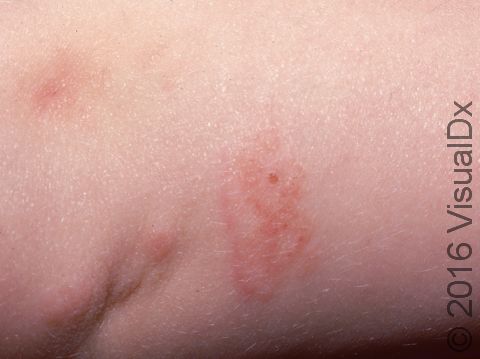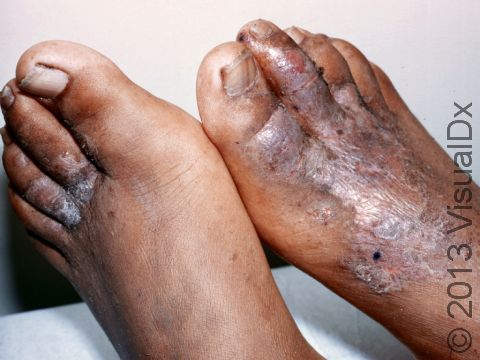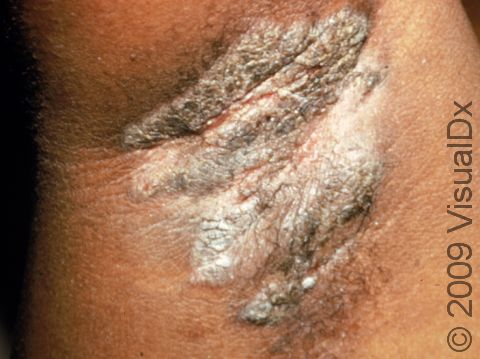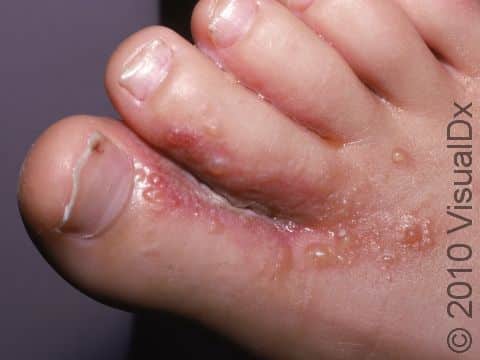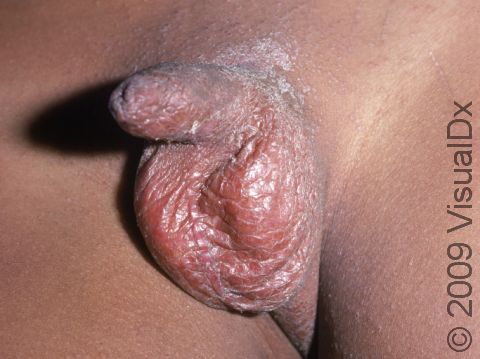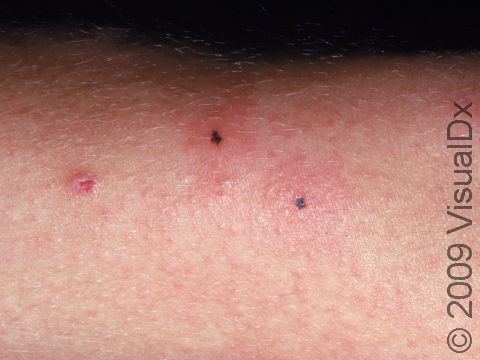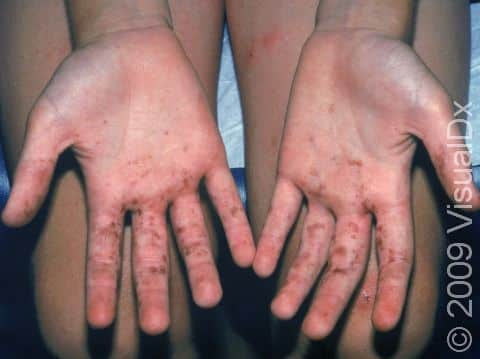Irritant Contact Dermatitis
Irritant contact dermatitis is an inflammatory rash caused by direct chemical injury, repeated rubbing (friction), or injury of any kind to the skin. Irritant contact dermatitis differs from allergic contact dermatitis, which is a delayed allergic response caused by a reaction with the immune system, where a rash appears 24-72 hours after exposure to the triggering substance (an allergen).
People with irritant contact dermatitis usually experience burning or stinging soon after the rash appears. Symptoms and rash associated with irritant contact dermatitis usually occur within hours, if exposed to a strong irritant. If the irritation continues and the skin becomes constantly inflamed, the burning, stinging rash can become severe or may start to itch.
Who's At Risk?
Irritant contact dermatitis can occur in people of any age, especially in people who have eczema (atopic dermatitis). The thin skin of young children makes them susceptible to irritant contact dermatitis.
Common triggers of irritant contact dermatitis include:
- Repeated exposure to water, such as frequent hand washing.
- Exposure to hand sanitizers and soaps.
- Exposure to harsh chemicals (such as solvents), fiberglass, mild acids, and chemicals with a high pH (alkalis).
- Dry air.
- Lip licking can also cause an irritant contact dermatitis around the mouth.
Signs & Symptoms
The most common location for irritant contact dermatitis is the hands, although any body surface can be affected, including the genitals. In children, the face is a common location for irritant contact dermatitis.
Irritant contact dermatitis may appear as pink-to-red macules (small, flat, smooth areas) or patches (larger flat, smooth areas). In darker skin colors, the redness may be harder to see or may appear purple or gray. The areas may have a sharp border corresponding to the areas of irritant exposure. The affected areas may become scaly and crack from long-term exposure to irritants. If the fingertips are affected, the skin may be scaly and may crack or peel.
Self-Care Guidelines
Help your child:
- Avoid whatever condition or chemical is causing the irritation, if known, and protect the skin from further exposure.
- For irritated skin in body folds, try using a barrier cream with zinc oxide paste, such as Desitin.
- Apply petroleum jelly (eg, Vaseline) or a thick moisturizing cream (eg, CeraVe moisturizing cream) to wet skin after bathing or washing. Reapply at least twice daily to help further protect the skin.
- For itchy areas, try applying over-the-counter hydrocortisone cream or ointment (0.5%-1%) twice daily.
Treatments
Your child’s medical professional may prescribe a topical steroid if the skin is inflamed.
Visit Urgency
See your child’s medical professional if the rash does not go away with self-care measures.
References
Bolognia J, Schaffer JV, Cerroni L. Dermatology. 4th ed. Philadelphia, PA: Elsevier; 2018.
James WD, Elston D, Treat JR, Rosenbach MA. Andrew’s Diseases of the Skin. 13th ed. Philadelphia, PA: Elsevier; 2019.
Kang S, Amagai M, Bruckner AL, et al. Fitzpatrick’s Dermatology. 9th ed. New York, NY: McGraw-Hill Education; 2019.
Paller A, Mancini A. Paller and Mancini: Hurwitz Clinical Pediatric Dermatology. 6th ed. St. Louis, MO: Elsevier; 2022.
Last modified on June 17th, 2024 at 11:45 am

Not sure what to look for?
Try our new Rash and Skin Condition Finder
